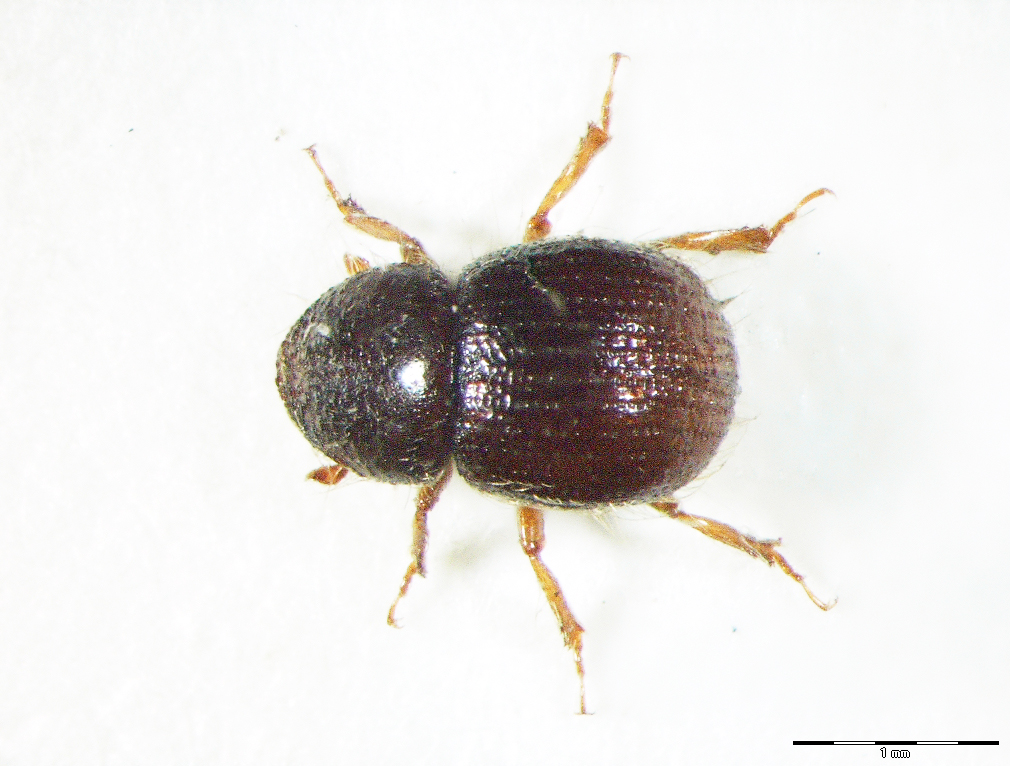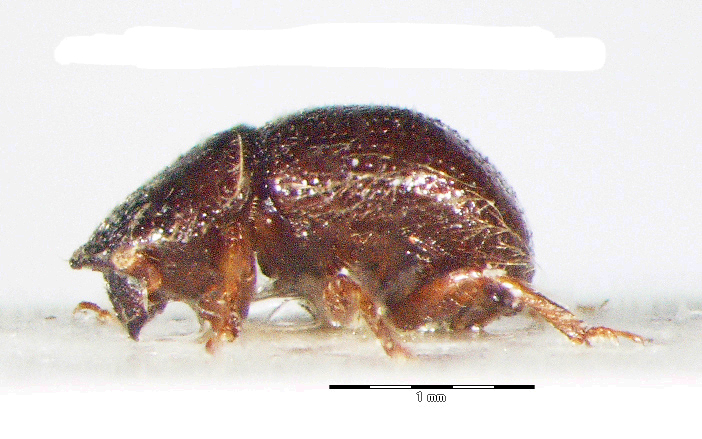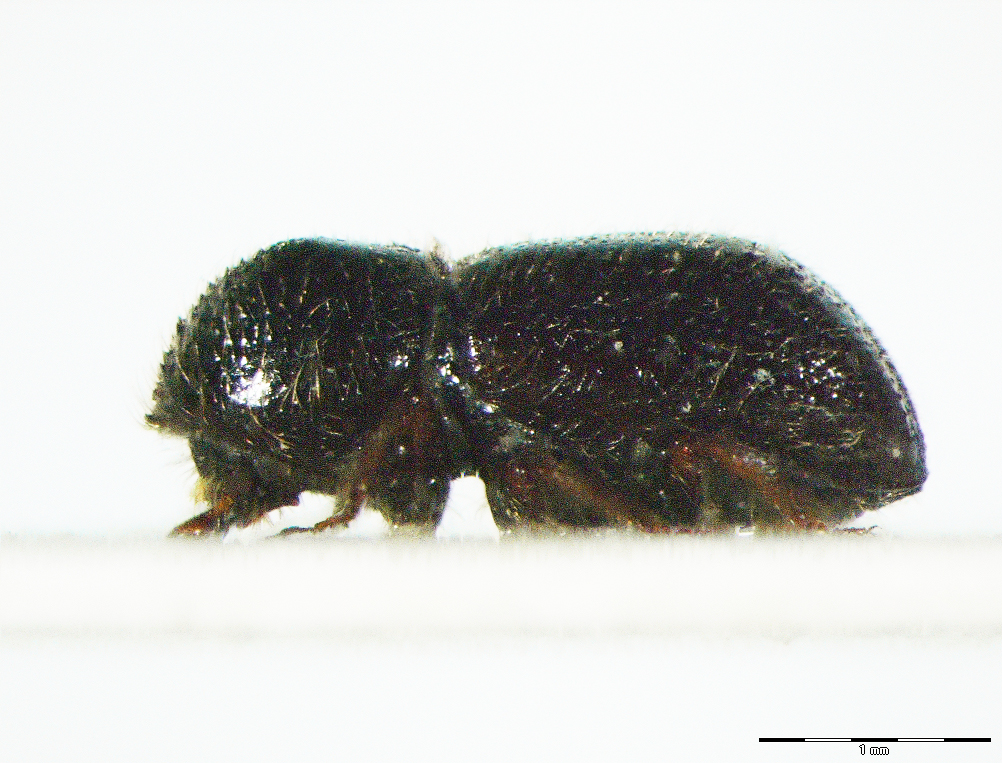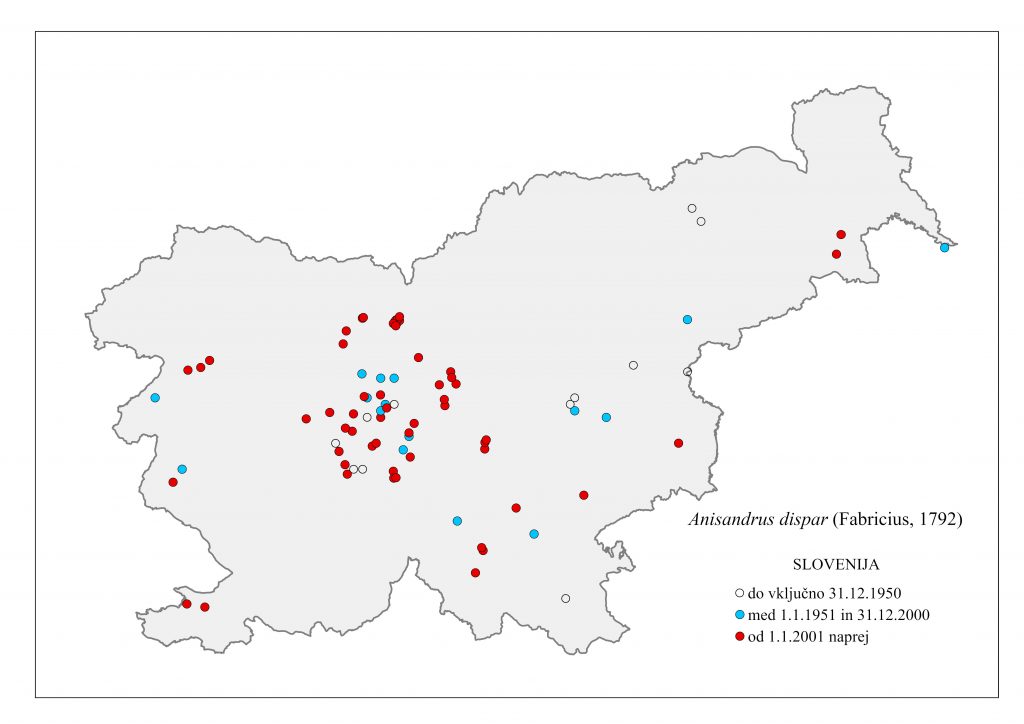35.01. Anisandrus dispar (Fabricius, 1792)
Presence
E: AB AU BE BH BU BY CR CT CZ DE EN FI FR GB GE GR HU IT LA LT MC MD NL NR NT PL SK SL SP ST SV SZ UK YU »Caucasus«
A: ES FE HEI IN JA KZ MG NC SC SHA TR WS
NAR
ORR
Figure 168: Anisandrus dispar (above: male – dorsal, lateral, below: female – dorsal, lateral) (Photo: Maja Jurc)
Older catalogs and keys – citations of name
Siegel 1866: Bostrychus dispar Fab.; Grüne 1979: Xyleborus dispar Fabricius, 1792; Freude, Harde, Lohse 1981: Xyleborus dispar Fabricius; Titovšek 1988: Xyleborus dispar (Fabricius); Pfeffer & Knížek 1993: X. dispar (Fabricius, 1792); Pfeffer 1995: X. dispar (Fabricius, 1792).
Figure 169: Anisandrus dispar, distribution map according to historical and recent data
Ecology and presence in Slovenia
The species is distributed in Europe, Siberia, Asia Minor, the Caucasus, the Nearctic and the Orient. Siegel (1866) states that the species was “common in Carniola, on oaks, beeches, etc.”. It is common and widespread in almost the whole of Slovenia, except in Koroška and Prekmurje (Figure 169). Polyphagous species on many deciduous trees, hosts include Betula pubescens, B. pendula, Alnus incana, A. glutinosa, Aesculus hippocastani, Castanea sativa, Platanus occidentalis, P. orientalis, Prunus armeniaca, P. avium, P. cearsus, P. domestica, P. insititia, P. padus, P. persica, P. syriaca, Rosa spp, Salix spp., Sambucus nigra, Sorbus torminalis, Tilia cordata, Rhamnus cathartica, Frangula alnus, Robinia pseudoacacia, Fagus sylvatica, Juglans regia, Koelreuteria paniculata, Populus tremula, Malus spp, Pyrus communis, P. malus, Ulmus carpinifolia, Vitis vinifera, Sorbus aucuparia, Acer spp., Fraxinus excelsior, Quercus robur, Q. rubra, Q. petraea, Corylus avellana, Carpinus betulus), Pinus sylvestris, Thuja occidentalis, T. orientalis and Juniperus spp.. In Slovenia, the species has been caught in traps in most of the sites. It has also been recorded in forest trees (Castanea sativa, Fagus sylvatica and Quercus petraea), orchards (Malus domestica) and nurseries (Liquidambar styraciflua). A polygamous xylomycetophagous species, it develops one generation per year, swarming in April and May. It has a ladder-shaped tunnel system. Primary maternal galleries run along the tree rings, and secondary galleries branching off from them run in the direction of the wood fibres, i.e. longitudinally. The larvae live on fungal mycelium carried by the females (an example of ectosymbiosis). The imago is characterised by prominent sexual dimorphism, with female length of 3.2-3.6 mm and male length of only 1.8-2.1 mm. In the female, the elyra apex starts at the beginning of the second half of the elytra. Males have a short, ovoid body and a heart-shaped neck shield; the second (flight) pair of wings is not developed (Figure 168). The species is very dangerous to fruit trees. It can cause severe damage in young chestnut and walnut groves that have been weakened by drought or transplant shock. It is also dangerous to weakened forest trees. The construction of tunnel systems leads to the technical degradation of timber.





